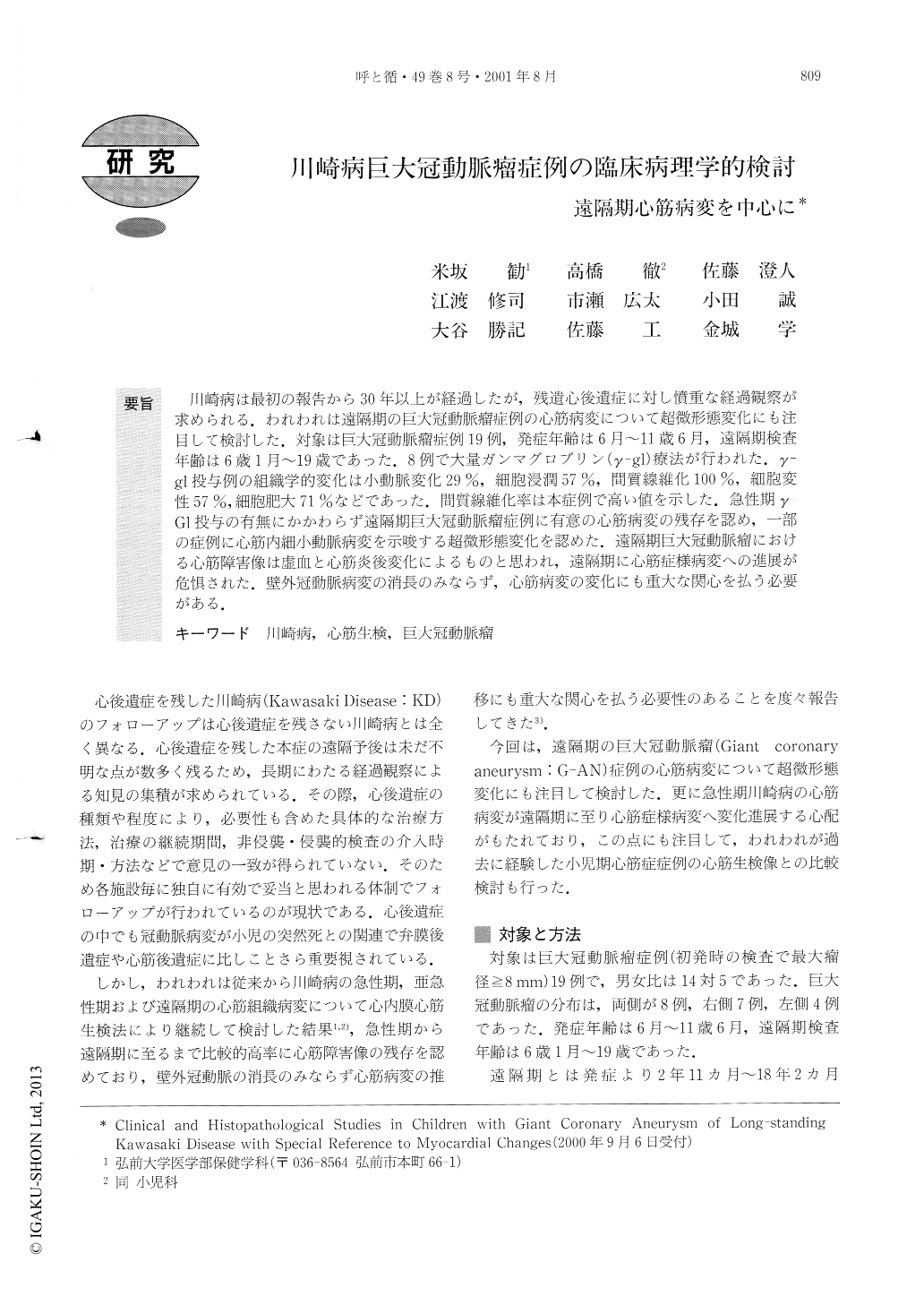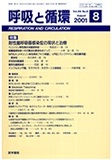Japanese
English
- 有料閲覧
- Abstract 文献概要
- 1ページ目 Look Inside
要旨 川崎病は最初の報告から30年以上が経過したが,残遺心後遺症に対し憤重な経過観察が求められる.われわれは遠隔期の巨大冠動脈瘤症例の心筋病変について超微形態変化にも注目して検討した.対象は巨大冠動脈瘤症例19例,発症年齢は6月〜11歳6月,遠隔期検査年齢は6歳1月〜19歳であった.8例で大量ガンマグロブリン(γ-gl)療法が行われた.γ-g1投与例の組織学的変化は小動脈変化29%,細胞浸潤57%,間質線維化100%,細胞変性57%,細胞肥大71%などであった.間質線維化率は本症例で高い値を示した.急性期γ—Gl投与の有無にかかわらず遠隔期巨大冠動脈瘤症例に有意の心筋病変の残存を認め,一部の症例に心筋内細小動脈病変を示唆する超微形態変化を認めた.遠隔期巨大冠動脈瘤における心筋障害像は虚血と心筋炎後変化によるものと思われ,遠隔期に心筋症様病変への進展が危惧された.壁外冠動脈病変の消長のみならず,心筋病変の変化にも重大な関心を払う必要がある.
Since Kawasaki disease (KD) was first reported 30 years ago. many studies focused on coronary arterial lesions (CAL) have been reported, but there have been only a few reports of pathological studies on myocardial after-effects of KD using endomyocardial biopsy (EMB).
With this in mind, we attempted to investigate the long-standing myocardial abnormalities and the relationship between CAI and myocardial damage by serial coronary arteriography and EMB in patients with KD.
Their ages ranged from 6 months to 11 years and 6months in the first study, 6 years and 1 monh to 19 years in the subsequent study. and the male to female ratio was 14 : 5 in 19 patients with G-AN.
The interval between the first study and the second one was more than 2 years and 6 months. Epicardial coronary arterial lesions were analyzed semiquantatively with MIPRONTRM and histopathology using histomorphometric methods to calculate the percent area of myocytes, fibrous tissue and fatty tissue and small vessel changes.
In the subsequent study, progression of CAL was noticed in 21%, unchanged condition in 63% and regression in 16%. Myocardial changes of second EMB in patients treated with intravenous high dose γ-globulin treatment were fibrosis in 100%, degeneration in 57%. One of the cases with KD, who had CAL, revealed massive inflammatory cell infiltration and mvocvtolysisin the subsequent study performed 7 years, after onset, which suggested chronic myocarditis.
Myocardial changes in patients with G-AN were relatively mild when viewed on light microscope, but still remained and there were ultrastructural changes such as microangiopathy in the late stage without relation to γ-globulin administration. The relatively high incidence of myocardial damage in KD with G-AN might possibly result in a cardiomyopathy-like state over a long-term period. Further approaches are mandatory to clarify the significance of the myocardial sequelae of KD with close attention not only to CAL but also to the myocardial changes in long-standing cases of the disease.

Copyright © 2001, Igaku-Shoin Ltd. All rights reserved.


